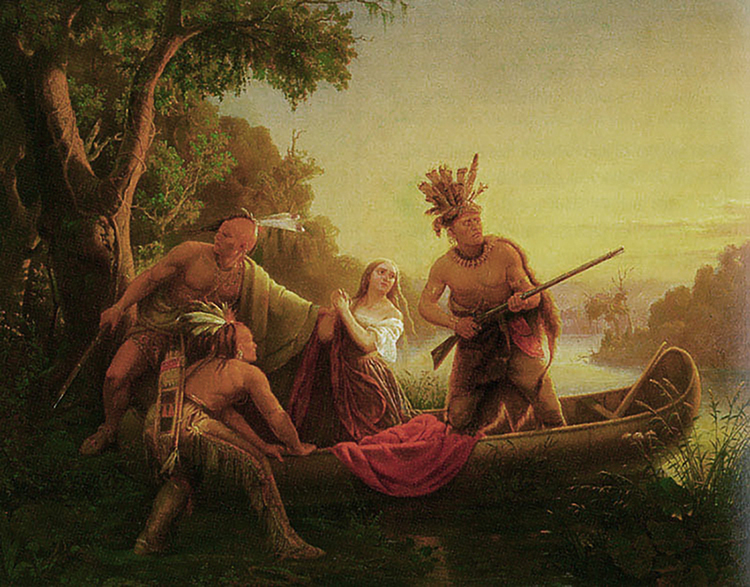|
Raptio
''Raptio'' (in archaic or literary English rendered as ''rape'') is a Latin term for, among several other meanings for senses of "taking", the large-scale abduction of women: kidnapping for marriage, concubinage or sexual slavery. The equivalent German term is ''Frauenraub'' (literally ''woman robbery''). Bride kidnapping is distinguished from ''raptio'' in that the former is the abduction of one woman by one man (and his friends and relatives), whereas the latter is the abduction of many women by groups of men, possibly in a time of war. Terminology The English word ''rape'' retains the Latin meaning in literary language, but the meaning is obscured by the more current meaning of "sexual violation". The word is akin to ''rapine'', ''rapture'', '' raptor'', ''rapacious'' and ''ravish'', and referred to the more general violations, such as looting, destruction, and capture of citizens, that are inflicted upon a town or country during war, e.g. the Rape of Nanking. The ''Oxfor ... [...More Info...] [...Related Items...] OR: [Wikipedia] [Google] [Baidu] |
Sexual Slavery
Sexual slavery and sexual exploitation is an attachment of any ownership rights, right over one or more people with the intent of Coercion, coercing or otherwise forcing them to engage in Human sexual activity, sexual activities. This includes forced labor that results in sexual activity, forced marriage and sex trafficking, such as the Child prostitution, sexual trafficking of children. Sexual slavery has taken various forms throughout history, including single-owner bondage and ritual servitude linked to religious practices in regions such as Ghana, Togo, and Benin. Moreover, slavery's reach extends beyond explicit sexual exploitation. Instances of non-consensual sexual activity are interwoven with systems designed for primarily non-sexual purposes, as witnessed in the colonization of the Americas. This epoch, characterized by encounters between European explorers and Indigenous peoples, saw forced labor for economic gains and was also marred by the widespread prevalence of ... [...More Info...] [...Related Items...] OR: [Wikipedia] [Google] [Baidu] |
Marriage
Marriage, also called matrimony or wedlock, is a culturally and often legally recognised union between people called spouses. It establishes rights and obligations between them, as well as between them and their children (if any), and between them and their Affinity (law), in-laws. It is nearly a cultural universal, but the definition of marriage varies between cultures and religions, and over time. Typically, it is an institution in which interpersonal relationships, usually sexual, are acknowledged or sanctioned. In some cultures, marriage is recommended or considered to be Premarital sex, compulsory before pursuing sexual activity. A marriage ceremony is called a wedding, while a private marriage is sometimes called an elopement. Around the world, there has been a general trend towards ensuring Women's rights, equal rights for women and ending discrimination and harassment against couples who are Interethnic marriage, interethnic, Interracial marriage, interracial, In ... [...More Info...] [...Related Items...] OR: [Wikipedia] [Google] [Baidu] |
Concubinage
Concubinage is an interpersonal relationship, interpersonal and Intimate relationship, sexual relationship between two people in which the couple does not want to, or cannot, enter into a full marriage. Concubinage and marriage are often regarded as similar, but mutually exclusive. During the early stages of European colonialism, administrators often encouraged European men to practice concubinage to discourage them from paying prostitutes for sex (which could spread venereal disease) and from homosexuality. Colonial administrators also believed that having an intimate relationship with a native woman would enhance white men's understanding of native culture and would provide them with essential domestic labor. The latter was critical, as it meant white men did not require wives from the metropole, hence did not require a family wage. Colonial administrators eventually discouraged the practice when these liaisons resulted in offspring who threatened colonial rule by producing a m ... [...More Info...] [...Related Items...] OR: [Wikipedia] [Google] [Baidu] |
Bride Kidnapping
Bride kidnapping, also known as marriage by abduction or marriage by capture, is a practice in which a man abducts the woman he wishes to marry. Bride kidnapping (hence the portmanteau bridenapping) has been practiced around the world and throughout prehistory and history, among peoples as diverse as the Hmong in Southeast Asia, the Tzeltal in Mexico, and the Romani in Europe. Bride kidnapping still occurs in various parts of the world, but it is most common in the Caucasus, Central Asia and some parts of Africa. In most nations, bride kidnapping is considered a sex crime because of the implied element of rape, rather than a valid form of marriage. Some types of it may also be seen as falling along the continuum between forced marriage and arranged marriage. The term is sometimes confused with elopements, in which a couple runs away together and seeks the consent of their parents later. In some cases, the woman cooperates with or accedes to the kidnapping, typically in ... [...More Info...] [...Related Items...] OR: [Wikipedia] [Google] [Baidu] |
The Fantasticks
''The Fantasticks'' is a 1960 musical with music by Harvey Schmidt and book and lyrics by Tom Jones. It tells an allegorical story, loosely based on the 1894 play ''The Romancers'' (''Les Romanesques'') by Edmond Rostand, concerning two neighboring fathers who trick their children, Luisa and Matt, into falling in love by pretending to feud. The show's original off-Broadway production ran a total of 42 years (until 2002) and 17,162 performances, making it the world's longest-running musical. The musical was produced by Lore Noto. It was awarded Tony Honors for Excellence in Theatre in 1991. The poetic book and breezy, inventive score, including such memorable songs as " Try to Remember", helped make the show durable. Many productions followed, as well as television and film versions. ''The Fantasticks'' has become a staple of regional, community and high school productions since its premiere, with approximately 250 new productions each year. It is played with a small cast, ... [...More Info...] [...Related Items...] OR: [Wikipedia] [Google] [Baidu] |
Nubile
{{Short pages monitor ... [...More Info...] [...Related Items...] OR: [Wikipedia] [Google] [Baidu] |
Neolithic Europe
The European Neolithic is the period from the arrival of Neolithic (New Stone Age) technology and the associated population of Early European Farmers in Europe, (the approximate time of the first farming societies in Greece) until –1700 BC (the beginning of Bronze Age Europe with the Nordic Bronze Age). The Neolithic overlaps the Mesolithic and Bronze Age periods in Europe as cultural changes moved from the southeast to northwest at about 1 km/year – this is called the Neolithic Expansion. The duration of the Neolithic varies from place to place, its end marked by the introduction of bronze tools: in southeast Europe it is approximately 4,000 years (i.e. 7000 BC–3000 BC) while in parts of Northwest Europe it is just under 3,000 years (–1700 BC). In parts of Europe, notably the Balkans, the period after is known as the Chalcolithic (Copper Age) due to the invention of copper smelting and the prevalence of copper tools, weapons and other artifacts. The spread of t ... [...More Info...] [...Related Items...] OR: [Wikipedia] [Google] [Baidu] |
Linear Pottery Culture
The Linear Pottery culture (LBK) is a major archaeological horizon of the European Neolithic period, flourishing . Derived from the German ''Linearbandkeramik'', it is also known as the Linear Band Ware, Linear Ware, Linear Ceramics or Incised Ware culture, falling within the Danubian I culture of V. Gordon Childe. Most cultural evidence has been found on the middle Danube, the upper and middle Elbe, and the upper and middle Rhine. It represents a major event in the initial spread of agriculture in Europe. The pottery consists of simple cups, bowls, vases, jugs without handles and, in a later phase, with pierced lugs, bases, and necks.Hibben, page 121. Important sites include Vráble and Nitra in Slovakia; Bylany in the Czech Republic; Langweiler and Zwenkau (Eythra) in Germany; Brunn am Gebirge in Austria; Elsloo, Sittard, Köln-Lindenthal, Aldenhoven, Flomborn, and Rixheim on the Rhine; Lautereck and Hienheim on the upper Danube; and Rössen and Sond ... [...More Info...] [...Related Items...] OR: [Wikipedia] [Google] [Baidu] |
Asparn An Der Zaya
Asparn an der Zaya is a town in the district of Mistelbach in the Austrian state of Lower Austria Lower Austria ( , , abbreviated LA or NÖ) is one of the nine states of Austria, located in the northeastern corner of the country. Major cities are Amstetten, Lower Austria, Amstetten, Krems an der Donau, Wiener Neustadt and Sankt Pölten, which .... Population References Cities and towns in Mistelbach District {{LowerAustria-geo-stub ... [...More Info...] [...Related Items...] OR: [Wikipedia] [Google] [Baidu] |
Austria
Austria, formally the Republic of Austria, is a landlocked country in Central Europe, lying in the Eastern Alps. It is a federation of nine Federal states of Austria, states, of which the capital Vienna is the List of largest cities in Austria, most populous city and state. Austria is bordered by Germany to the northwest, the Czech Republic to the north, Slovakia to the northeast, Hungary to the east, Slovenia and Italy to the south, and Switzerland and Liechtenstein to the west. The country occupies an area of and has Austrians, a population of around 9 million. The area of today's Austria has been inhabited since at least the Paleolithic, Paleolithic period. Around 400 BC, it was inhabited by the Celts and then annexed by the Roman Empire, Romans in the late 1st century BC. Christianization in the region began in the 4th and 5th centuries, during the late Western Roman Empire, Roman period, followed by the arrival of numerous Germanic tribes during the Migration Period. A ... [...More Info...] [...Related Items...] OR: [Wikipedia] [Google] [Baidu] |
Archaic English
Old English ( or , or ), or Anglo-Saxon, is the earliest recorded form of the English language, spoken in England and southern and eastern Scotland in the Early Middle Ages. It developed from the languages brought to Great Britain by Anglo-Saxon settlers in the mid-5th century, and the first Old English literature dates from the mid-7th century. After the Norman Conquest of 1066, English was replaced for several centuries by Anglo-Norman language, Anglo-Norman (a langues d'oïl, type of French) as the language of the upper classes. This is regarded as marking the end of the Old English era, since during the subsequent period the English language was heavily influenced by Anglo-Norman, developing into what is now known as Middle English in England and Early Scots in Scotland. Old English developed from a set of Anglo-Frisian or Ingvaeonic dialects originally spoken by Germanic tribes traditionally known as the Angles (tribe), Angles, Saxons and Jutes. As the Germanic settlers ... [...More Info...] [...Related Items...] OR: [Wikipedia] [Google] [Baidu] |
Abduction Of Children
Child abduction or child theft is the unauthorized removal of a minor (a child under the age of legal adulthood) from the custody of the child's natural parents or legally appointed guardians. The term ''child abduction'' includes two legal and social categories which differ by their perpetrating contexts: abduction by members of the child's family or abduction by strangers: * Parental child abduction is the unauthorized custody of a child by a family relative (usually one or both parents) without parental agreement and contrary to family law ruling, which may have removed the child from the care, access and contact of the other parent and family side. Occurring around parental separation or divorce, such parental or familial child abduction may include parental alienation, a form of child abuse seeking to disconnect a child from targeted parent and denigrated side of family. This is, by far, the most common form of child abduction. * Abduction or kidnapping by strangers ... [...More Info...] [...Related Items...] OR: [Wikipedia] [Google] [Baidu] |






